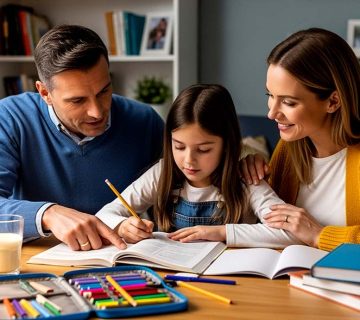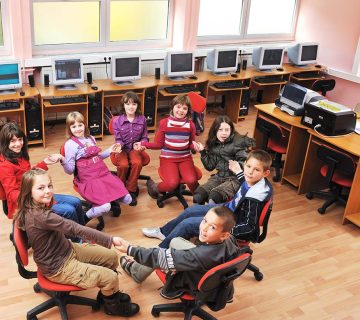The “Flipped Classroom” method is an innovative educational model in which the delivery of lesson content is shifted from the classroom to the home, and classroom time is dedicated to interactive activities, discussion, and practice. In this approach, students become familiar with concepts before the lesson by watching videos, reading articles, or completing preliminary activities, and during in-person class time, they focus on problem-solving, group projects, and interaction with the teacher. Parental involvement in the flipped classroom process serves as a bridge between at-home learning and classroom activities and plays a key role in the success of this method.
The role of parents in the flipped classroom model can be examined from various perspectives. First, parents act as learning facilitators; when children watch educational videos or read instructional texts at home, parents can accelerate the learning process by creating a suitable environment, monitoring progress, and answering basic questions. This initial support helps the child enter deeper in-class discussions with greater confidence.
In addition, parents can collaborate with the teacher in designing hands-on activities and home projects. For example, after learning a scientific topic through a video, parents can help children conduct a simple experiment in the kitchen or use the surrounding nature to observe and document scientific phenomena. These interactive activities not only deepen the understanding of concepts but also strengthen the connection between learning and real life.
Parental involvement in the flipped classroom model helps improve students’ self-regulation and sense of responsibility. By setting a schedule for watching lesson content and completing related activities, parents teach the child how to manage their time and identify learning priorities. Developing this management skill at a young age provides a valuable foundation for self-directed learning in the future.
Experience has shown that continuous and two-way communication between parents and teachers is a key factor in the effectiveness of the flipped classroom. The use of digital tools such as Learning Management Systems (LMS) or messaging groups can enable real-time updates on the child’s progress and quick feedback. For example, after watching an educational video, parents can record their child’s notes and questions on the LMS platform, and the teacher can address learning concerns with precise responses.
Despite its advantages, there are also challenges. Some parents may lack the time or technical knowledge needed to use digital tools. Additionally, aligning the expectations of teachers and parents regarding the level and type of involvement may require orientation sessions or training workshops. Creating simple and practical guidelines for parents, such as short video tutorials or brief in-person meetings, can help reduce these barriers.
For successful implementation of the flipped classroom with parental involvement, the following practical tips are recommended:
Define roles and responsibilities: At the beginning of the term or unit, the teacher and parents should clearly outline the vision of the flipped classroom method, expectations, and the role of each party.
Digital tools training: Provide step-by-step guides for using educational platforms or applications through online workshops or short videos.
Set a regular schedule: Establish specific days and times for reviewing content at home and for feedback between the teacher and parents.
Create an open communication channel: Use email, messaging apps, or regular short meetings to provide updates and resolve any questions.
Continuous feedback: The teacher should review the results of home activities and report back to the parents, providing additional guidance if needed.







